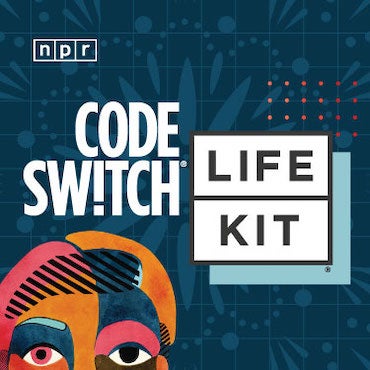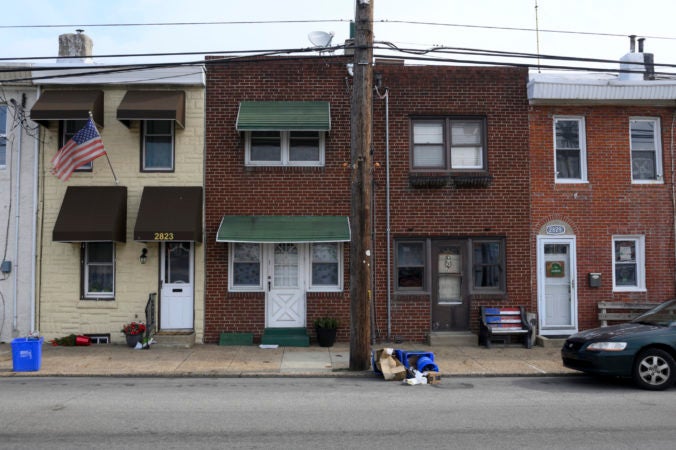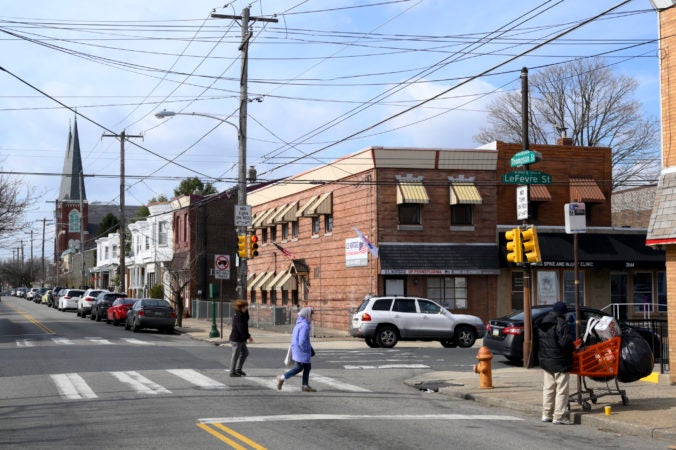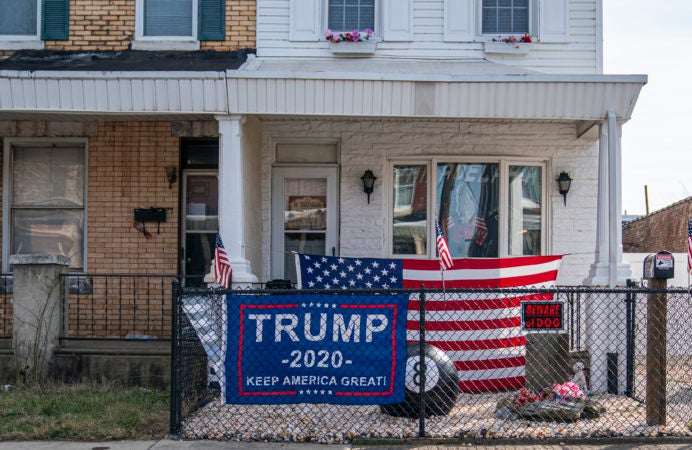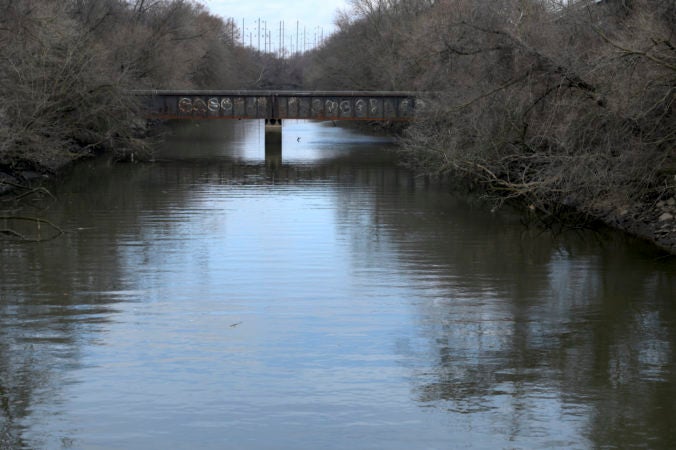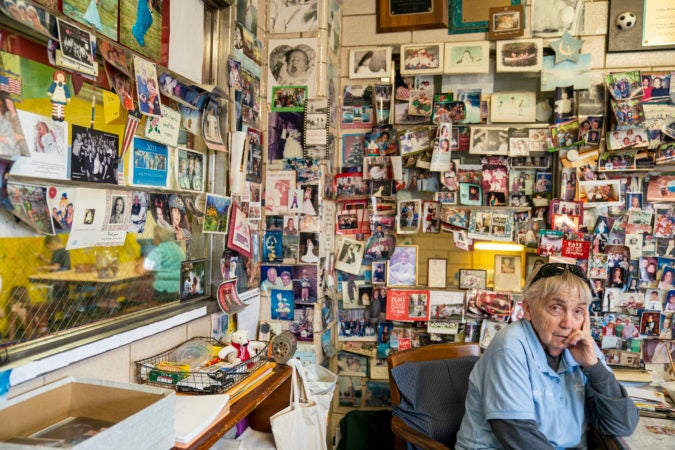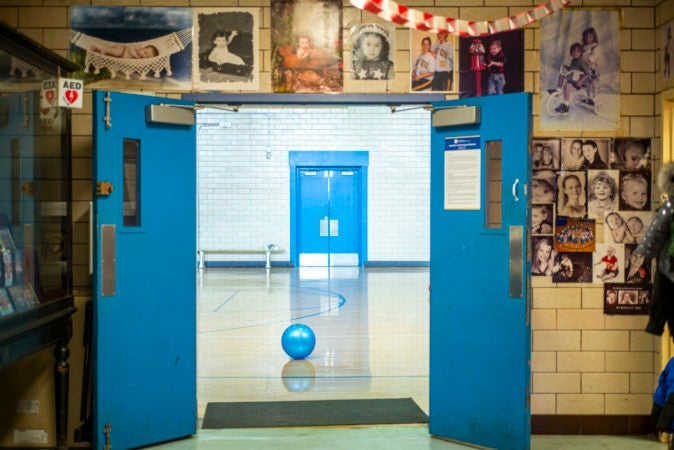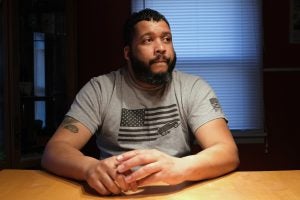Philly border fight: How a ‘secret’ working-class neighborhood built its own wall
Bridesburg is a working-class safe haven in Philly that rarely makes the police blotter. But it has a reputation of being exclusionary, and sometimes racist.
Yali Perez worries about her son Ian playing outside with other kids near their home in Bridesburg. On paper, the neighborhood is safe. Yali and her mother, Brenda Santiago, moved here precisely because of its safety.
But the 29-year-old mother has seen how quickly things can turn ugly in this part of Philadelphia and doesn’t want to end up embroiled in a feud that could force her to leave.
Yali says neighbors can turn against each other anywhere, but here, she says, racial animosity can escalate things from bad to worse to seemingly irreparable.
The stakes are higher when children are involved.
A few years ago, a Black family rented the house across from Yali’s on the north end of this historically white working-class enclave. One day, a white kid got into an argument with a Black kid and called him “a n*****,” Yali said.
Pandemonium erupted that night in the street. The families of both teenagers called on relatives for backup.
Months later, the Black family moved out of the neighborhood, Yali recalls.
“This is why you don’t go outside,” she tells her son, “because kids start a fight and grownups think it’s their job to fix it. And this is the way that it goes down, and that’s how it’s always been.”
***
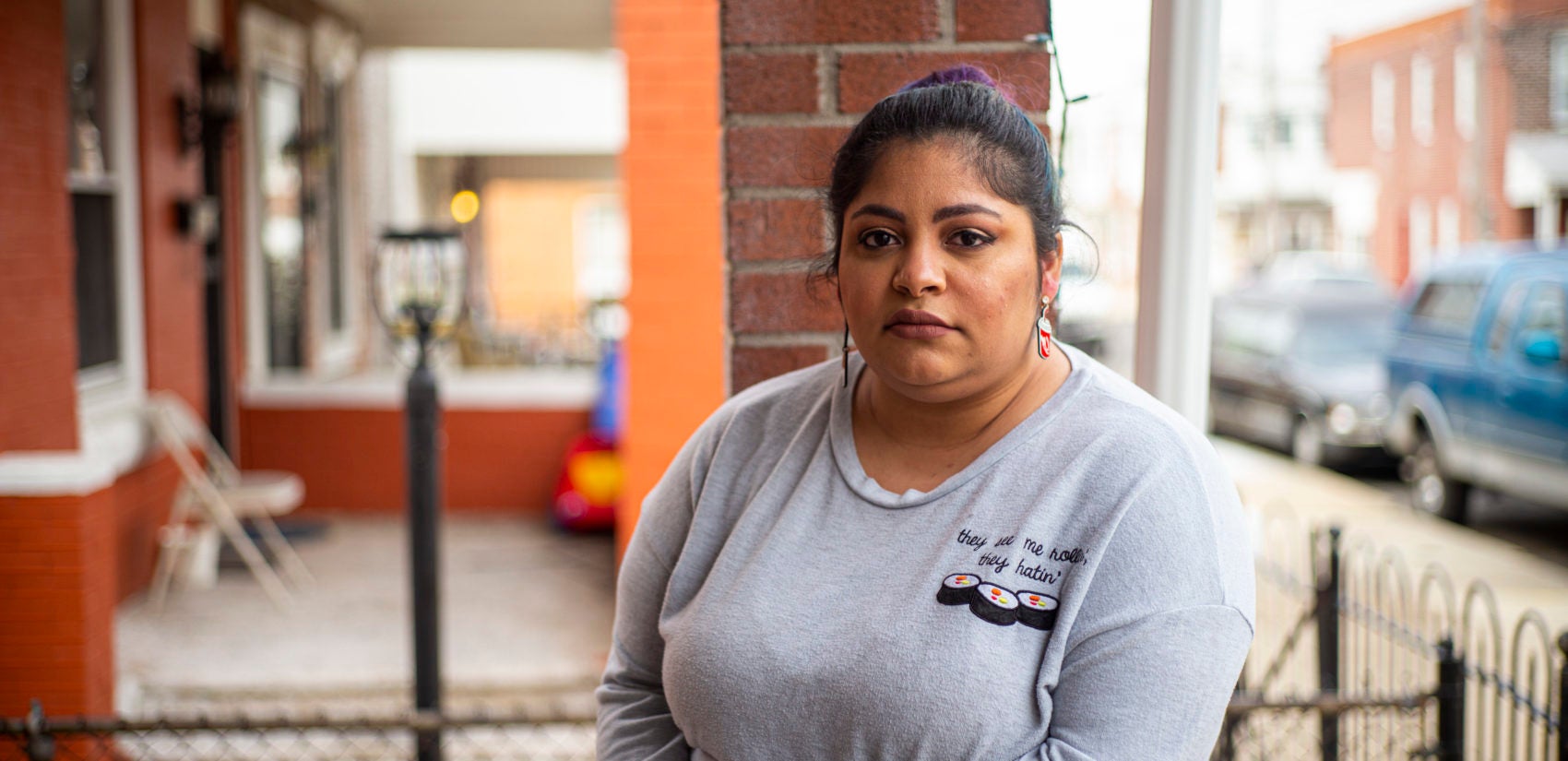
With a population around 6,500 people, Bridesburg is a sleepy pocket of rowhouses along the Delaware River, mostly walled off from surrounding neighborhoods by industrial yards and the I-95 interstate.
The neighborhood appeals to families like Yali’s for the same reasons it appeals to the generations of mostly white residents who proudly call it home. It’s family-oriented and relatively quiet. Most importantly for Yali and her mother, crime is low. In a city that contends with 300-plus homicides annually, less than a dozen have occurred in the ‘Burg — since 1987.
Only a few roads take you in and out, giving it the feel of an urban cul-de-sac six miles from Center City. This quarter once bustled with factory life, where generations of German, Irish and Polish immigrants could walk to jobs at the nearby U.S. ammunition manufacturer or Kopper’s coke plant. Hundreds of small businesses packed the streets of the neighborhood.
If you lived in Bridesburg, you never had to leave.
Much has changed since the early 20th century industrial boom years. Factories closed. Small businesses got squeezed out by the big box economy. But many Bridesburg residents stayed rooted. Unlike similar neighborhoods in the city, it has remained a stronghold for union tradesmen, first responders and other working-class Philadelphians. And more obviously on the surface, its racial and ethnic makeup hasn’t shifted much at all, with a population that’s about 90% white.
In the seven years since moving in, Yali and her mother, who are Puerto Rican, have grown accustomed to what they call the “Trump” culture of Bridesburg. Politically, registered Democrats dominate the neighborhood, but in 2016, residents here overwhelmingly voted for Republican Donald Trump. That’s a stark contrast to adjacent neighborhoods won decisively by Hillary Clinton.
Some of the uglier parts of MAGA-culture have found traction here. In 2018, a white supremacist group flyered the neighborhood with recruitment propaganda. Openly racist speech airs in many places. Yali hears “spic” for Puerto Ricans and the n-word thrown around casually about Black people — who are the smallest population in Bridesburg.
A scant four Black people lived here as of the 2010 census.
So for the most part, Yali’s family keeps to themselves.
“There wasn’t a vibe like ‘Maybe we should go say hi to everyone,’” Yali says of moving in. “The vibe was, like, watching us. I even joked with [my mom] and said ‘Do you think I should make cookies?’ She was like, ‘That doesn’t sound like a good idea.’”
A self-described geek, Yali works from home as a freelancer who writes about Japanese anime and Manga, and their intersection with motherhood. Her mother works at a publishing company in Center City. Ian, 10, is big into sci-fi right now and the popular video game Fortnite.
They have had their own share of run-ins with rough-edged residents. On the rainy morning they moved here in 2013, one of their neighbors called the police to report them for a hit-and-run, claiming they’d bumped into his car with their U-Haul.
They’ve faced a deluge of suspicious questions — many of them charged with stereotypes about their heritage. One neighbor asked: Are you affiliated with a gang?
“I promise you, I don’t even know a gang member,” Yali recalled, with a nervous laugh.
Bridesburg, though, seems to be at a crossroads. Demographic shifts, though slow, are occurring, and the neighborhood is poised for redevelopment.
These changes have sometimes resulted in growing pains that resurface the neighborhood’s history of racial discrimination in the real estate market.
Single-family homeownership here is a sacred tradition. The ‘Burg once boasted the highest percentage of owner-occupied homes in Philadelphia — about 85 percent of its housing stock. Civic leaders fight to keep it that way. They wage zoning wars against multi-family units, and try to keep the neighborhood’s relatively small housing supply from slipping into the hands of “outsiders.”
But lifelong residents skeptical of change are also concerned about growth. Many want more businesses to open, and they want their home values to keep rising. Can Bridesburg build that kind of future without opening its borders a bit?
***
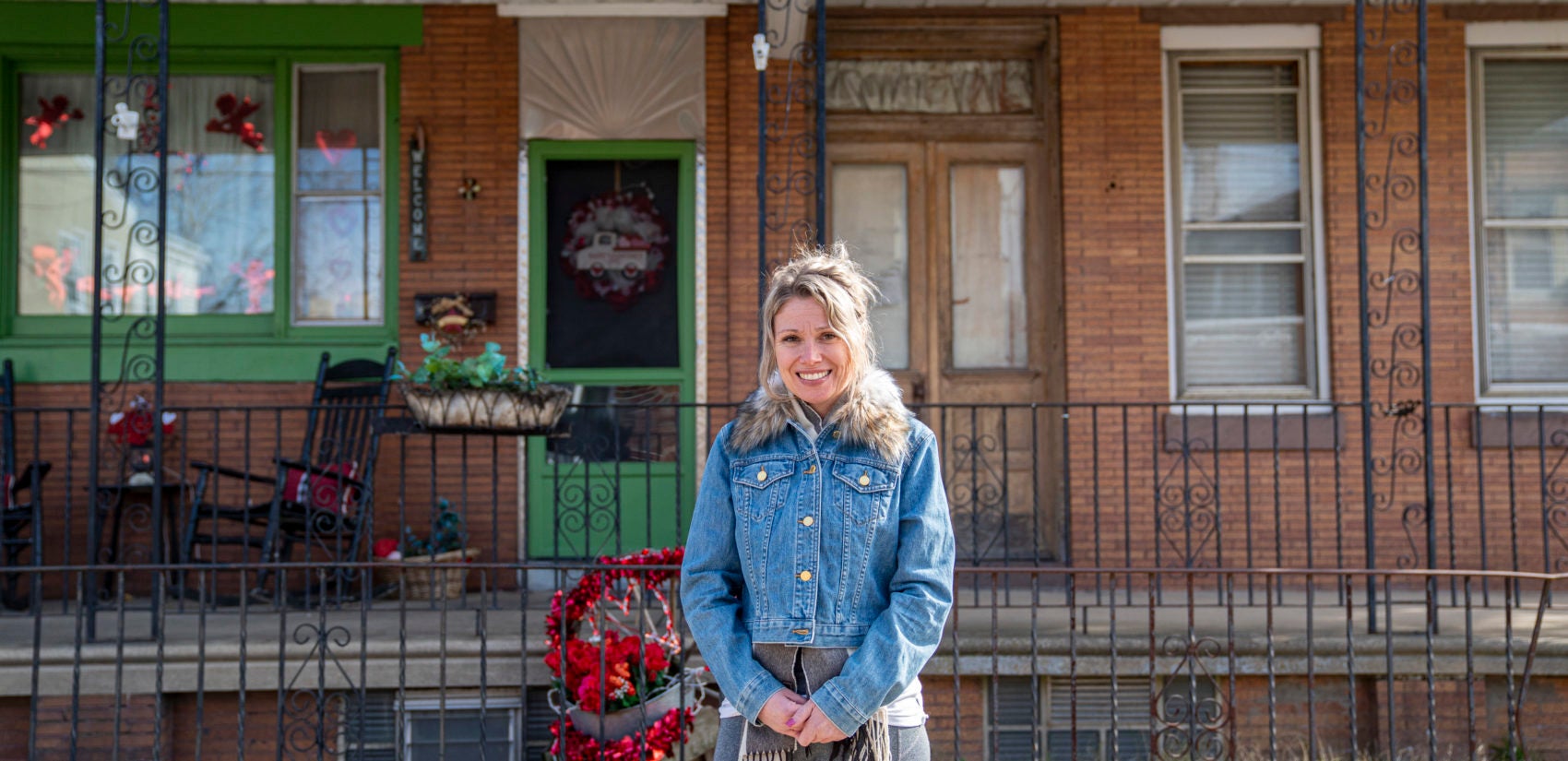
Yvonne Stephens grew up in Bridesburg in the 1970s when it seemed like every day was a block party. Walking past the well-kept rowhomes on Garden Street, she bursts with delight at memories from her childhood.
“We would play constantly from morning to night,” she said. “I had best friends down here.”
Now 47, Yvonne is a home healthcare aide by day, and by night leads the charity effort of the biker group Stars and Stripes, Bars and Pipes, which helps military veterans and first responders.
She also heads the Bridesburg Community Action Alliance. Flashing a bright smile at everyone she encounters, she’s on a first name basis with what seems like half the residents — but there are plenty of faces she doesn’t recognize.
Unlike many of Bridesburg lifers, Yvonne left the neighborhood as an adult only later to come back in her early 30s with the kids. Her family also has ties to Virginia. She inherited land there, and at one point thought about building a house. “I have horses down there,” she said.
But it was only a matter of time before they settled back in the ‘Burg.
It was important that her kids know the convivial city life she grew up with — and her kids, now 17 and 27, want that life, too.
“Their heart and their roots are in Bridesburg,” she said.
Yvonne compares life here to Mayberry, the iconic good-spirited American neighborhood idealized by The Andy Griffith Show in the 1960s — although with more pitbulls, she says, showing off pictures of her family puppies.
In the ‘Burg, rowhouse stoops and porches get decorated for every holiday, from Valentine’s Day to Christmas. The annual Memorial Day parade brings out the whole neighborhood. The community-funded “Bridesburg Bulletin” keeps a printed chronicle of local happenings.
Everybody knows everybody – or at the very least, they know Jacqueline “Miss Jackie” Desanctis, who, after working at the neighborhood rec center for six decades, had part of a street dedicated to her by the city.
Desanctis, true to form for the neighborhood, is a staunch advocate of the old-school way — rules and regulations be damned.
“They say you’re not supposed to touch ‘em if they cry,” she said of working with children at the rec center. “You’re not supposed to wipe their butts. Well, we just tell ‘em up front that if a three year-old is crying, we’re gonna hug ‘em.”
For Yvonne, it’s hard to tell where nostalgia for the old Bridesburg ends and her white-knuckled concern for the present begins, but it’s most likely at a neighborhood zoning meeting.
Her phone lights up with text messages about various real estate drama in the neighborhood. She fields reports from people in every corner of Bridesburg and has a direct line to the local elected officials. If a trash can gets knocked over, she wants to know about it.
Yvonne and other civic leaders are bulkwarking against change. Some revisions to the map are welcome, she says — they’re needed if the neighborhood is going to build up for her son and daughter’s future here. New businesses are finally showing some interest after years of commercial slumber. Decades in the making, the publicly-funded redevelopment of the waterfront that connects Bridesburg to the rest of the city is now rapidly moving forward.
But all change must go through the unofficial gatekeepers to be sure it fits with the traditional neighborhood fabric.
“We want to continue building a little, but not to where we’re bringing so much crazy into our neighborhood,” said Yvonne, “because we don’t need so much crazy.”
***
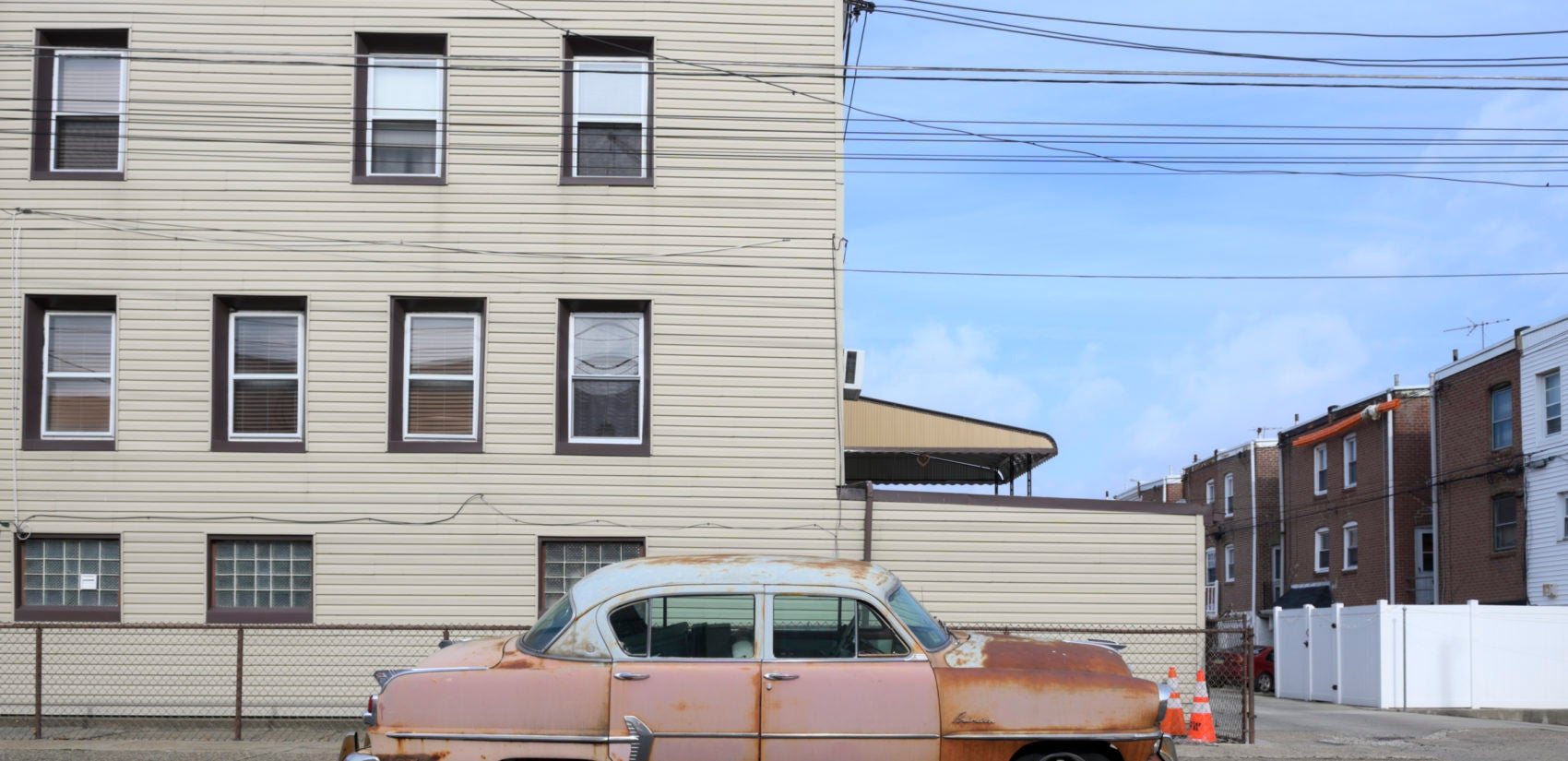
Keeping Bridesburg secret was once an option. People often advise new visitors to not talk about the neighborhood. Some are only half-joking.
“I really don’t want to do this interview,” Joseph F. Slabinski III, a funeral home owner and multi-generational neighborhood watchdog, said with a grin. “Bridesburg is truly a hidden gem, and we don’t want to tell many people about it. We want to keep it to ourselves.”
But it’s too late for that. Philadelphia’s real estate market is booming out from downtown in every direction, and Bridesburg has attracted more interest for its long-sung virtues of safety and stability in an often chaotic city.
That said, developers and investors have been quickly learning what happens when you don’t share the Bridesburg vision — namely, a neighborhood of single-family homes.
Led by Yvonne, the action alliance has successfully used the city’s zoning process to stonewall developers from opening multi-unit apartment complexes among other business operations.
Even when no zoning variance is needed, they’ve been able to pressure real estate interests. A bar opening up within a few blocks from a school? Not with Yvonne fighting it, as one business owner recently found.
Rising rentership remains the most common source of worry for neighborhood residents. There’s widespread sentiment that the area already has too many month-to-month tenants.
“We have more rentals now than when we were growing up,” Stephens said, at a meeting with her local charity group.
“Back then, you couldn’t get in this neighborhood if you tried,” said Rosemarie Conry, a longtime Bridesburg homeowner.
City records suggest the fears over rentals might be out of proportion.
There are 166 buildings with active rental licenses in Bridesburg — a small fraction of the neighborhood’s estimated 5,000 properties. That’s nearly 50% more rentals than there were over a decade ago. The rate of growth isn’t unique. Rentals in neighborhoods across the city have surged since 2009, according to a Keystone Crossroads analysis of licensing data.
When it comes to the neighborhood’s war on renters, many of Bridesburg’s watchdogs describe a familiar set of fears. Multi-family housing will eat up the parking supply. Crime will increase. Out of town landlords will let the properties fall into disrepair.
“The block behind me has six, and they’re shit holes,” said Conry.
As a worst-case scenario, they point to Mayfair, a nearby neighborhood in Northeast Philadelphia, which has seen an explosion in rental properties. Nowhere else in the city saw such a concentrated spike — with thousands more permits issued over the last decade.
“If you have a block with 20 homes, 15 of them are rental units,” Slabinski said. “The owner is in New York or out somewhere, and they’re not there. So, no pride. Rentals. That’s killing Mayfair.”
Studies suggest that a range of factors — including how far away a landlord lives and a neighborhood’s overall economic mobility — inform how rentals will impact a community.
The relationship between rentership and crime is complicated. But in Bridesburg, it’s commonly accepted wisdom that simply having more of the former drives the latter.
Police data doesn’t back up the public sentiment. In Mayfair, for instance, officers responded to fewer violent and non-violent crimes in 2019 than they did in 2014, and far fewer on average than they did in 2009, even as homeownership winnowed and rentals surged. The general decline comports with what local police commanders have shared with residents over the years.
It’s true, though, that crime in the ‘Burg has been kept even lower.
The neighborhood’s level of relative safety competes with the city’s most affluent areas. For many years in the last two decades, only the tony Chestnut Hill neighborhood could be called less fatal.
At the same time, the neighborhood has shown far more economic resilience than surrounding areas. Between 2014 and 2018, a U.S. Census survey found incomes declined in every neighborhood in Northeast Philadelphia — except one: the famously halcyon Bridesburg.
These are the family-first distinctions that Yvonne and others fight tooth and nail to preserve, hopefully, they say, for generations to come.
“It’s family — it really is,” said Yvonne. “I don’t ever want to leave.”
For local gatekeepers, when you dig deeper into housing issues, things are more complicated than the homeowner vs. renter dichotomy.
Slabinski says he owns a few rental properties and vets the tenants rigorously.
And at the end of a walk through the neighborhood, Yvonne discloses something that feels almost like a secret.
“I’m a renter,” she said. “That’s the most funniest thing in the world, isn’t it though?”
***
Fifteen years ago, Yvonne’s father fell ill and she made the decision to settle back down with the kids in the neighborhood. But when she and her husband went house hunting, they were stunned.
“There were no houses to buy,” she said.
Through the rumor mill, they eventually heard about a rare rental property available on Thompson Street, and locked it down with the help of neighborhood real estate broker Gary Dydak.
Residents describe Dydak as the veteran watchdog of Bridesburg real estate. “Everything went through him at some point,” said Tom Wegner, another realtor and developer in the neighborhood.
Bridesburg lifers historically didn’t give up properties easily. Residents and realtors described an informal brokerage system that helped keep the neighborhood’s estimated 5,000 properties off the real estate radar as much as possible.
Multi-generational residents long kept it in the family, Dydak says, passing them down to their next of kin. When there was no heir, local residents would sometimes buy the property before it fell into unknown hands. And when Bridesburgians sought to leave the neighborhood and rent rather than sell, they received a stern message from the neighborhood social circle.
“When they moved out, they could not rent. When they moved out, they had to sell,” said Peggy Alvarez, another longtime neighborhood resident.
Bridesburg’s invisible wall has been especially impenetrable for those hoping to rent using a subsidized housing voucher.
Federal housing data shows that about a third of Philadelphia census tracts don’t contain a single resident using the federal Housing Choice program. That includes the two tracts that make up Bridesburg. It’s a point of pride for many in the neighborhood.
“We try to keep it to a minimum,” Slabinkski said.
Landlords are supposed to consider Housing Choice tenants the same as they would any other, but in practice, many don’t. Less than a dozen properties are up for rent at any time in Bridesburg. Calls to several property managers inquiring about voucher rentals found no takers.
“I’m sorry,” one apologized.
***
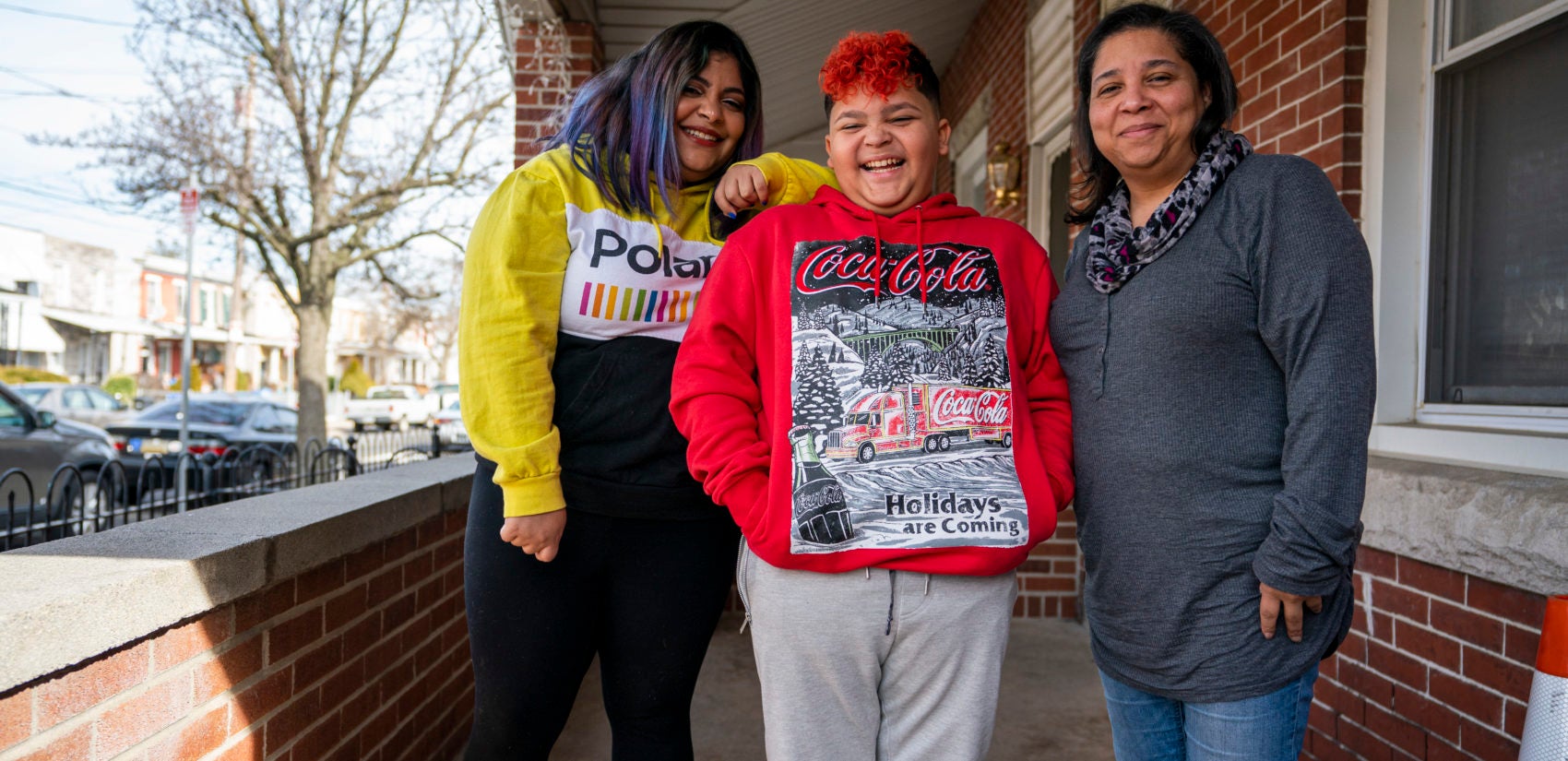
For Yali and her mother Brenda, buying in Bridesburg was a huge milestone.
Generations of their family lived in the same publicly-subsidized apartment in North Philly.
Nearly a decade ago, as that neighborhood began to bubble with gentrification, the Philadelphia Housing Authority closed its deteriorating properties there, leading the family to relocate.
They rented another place further north, where Yali, then in her early 20s with a baby boy, grew more concerned by the day. The last straw was a fatal shooting she witnessed right in front of their home. She knew she had to get out — for Ian.
“I can’t see anybody else get shot,” she said. “I don’t want my kid to get shot.”
With the help of the housing authority, she and her mother began researching first-time homebuyer programs. They applied for a mortgage, and within a few months, they signed their first deed in Bridesburg.
After seven years in the neighborhood, Yali says her neighbors have gotten to know her family as upstanding residents. But they do wonder what would have happened if they had moved in as renters using housing assistance.
Historically, that has not ended well for families of color.
Two decades ago, Bridesburg described itself in the same terms it does today. Neighbors touted its safety, stability and family values. It was the land that time forgot. The best little secret in Philadelphia.
In March 1996, a Black woman named Bridget Ward arrived with her two children and a low-income housing voucher.
Just hours after Ward moved in, racial epithets appeared in spraypaint on her front porch, along with streaks of ketchup made to resemble blood.
The incident sparked a media frenzy. The city put 24-hour protection around Ward’s house. Weeks later, she received a letter threatening to target her property with a homemade bomb.
Authorities believed the threats were credible, citing past attacks against nonwhite residents trying to start a life in Bridesburg. After a month of living in fear, Ward called it quits and moved out.
“I don’t need all these hateful people around me,” she said at the time. “I’m better than them.”
The incident and its aftermath were broadcasted nationally by ABC’s Nightline. Journalist Ted Koppel hosted a community forum with residents who spoke openly about a familiar set of fears: People of color replacing them in the neighborhood. Property values plummeting. Crime going up.
Many of their explanations were racist, Koppel noted. Residents disputed that race played a role in their reaction to Ward, saying the disqualifying factor for her was being a renter on a Section 8 voucher.
“I would tell her it’s a nice neighborhood, it’s very close knit, and people are slow to warm up to outsiders,” one resident said. It just takes a while to be accepted, they explained. “We like it that way,” another resident chimed in.
After a long forum, many residents conceded Ward had not been given a fair chance to prove she would be a good neighbor. White residents at the time had lived there on housing vouchers without qualm, the group acknowledged, and no one knew about Ward’s Section 8 status before the vandalism appeared.
“All they knew is she was Black,” one resident said.
***

Talking about this part of Bridesburg’s past, Yvonne Stephens bristles at the idea that the neighborhood still carries this reputation today. She says she doesn’t hear many complaints about racism from the residents of color she knows, but says she hopes people would come to her if they feel harassed or unwelcomed.
“I would get involved,” said Yvonne. “If you’re the person who is a longtime resident and somebody new came in and you’re doing this to them, shame on you…You’re damning my neighborhood…You’re throwing it out there that Bridesburg is something we’re not.”
Still, Bridesburgians today are open about their suspicions of newcomers. It’s hard to break through the family tree that has laid roots here over generations.
Yvonne hopes that people — especially those who may feel like “outsiders” — will show up to take part in the neighborhood’s beloved traditions.
Join her charity group. Come to the civic meetings. Send the kids to the Boys & Girls Club, or the rec center to meet Miss Jackie.
“You can’t show anybody you’re afraid of anything,” she said. “You’re letting them intimidate you.”
On the opposite end of Bridesburg, Yali Perez says that, despite some of the landmines of navigating life here, she and her mother are proud to call it home.
She’s not afraid to get involved, either. She’s “that mom” at her son Ian’s charter school in the neighborhood. And she, too, is warming up to the role of watchdog.
When a vacant house on the end of her block started attracting after-school partying and drug use, she did what Yvonne would have done — called on local government officials to take action.
Of her fears about her son and potential feuds with neighbors, she says it’ll take some recognition from both sides.
Yali compares Bridesburg to the Japanese manga series Dr. Stone, which tells the story of two kingdoms fighting to rebuild a distant planet. Two factions escalate into a war, driven between ideologies of science and strength, but ultimately they come to see the light.
“At a certain point, they realize this is stupid — we all want the same things,” Yali said. “We want to rebuild Earth, to bring everybody back, and give everybody a chance to make their own kingdoms.”
“Right now it’s just a divide of color,” she adds. “We all want our kids to be safe. We want to be able to walk around on the street. We want to be able to help each other, and make this area grow in the best possible way.”
WHYY is your source for fact-based, in-depth journalism and information. As a nonprofit organization, we rely on financial support from readers like you. Please give today.
